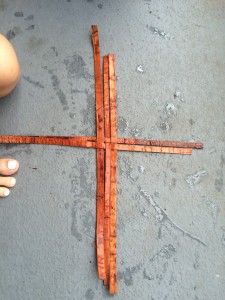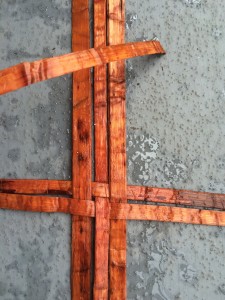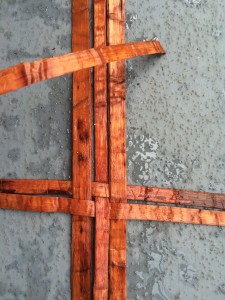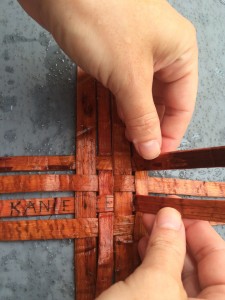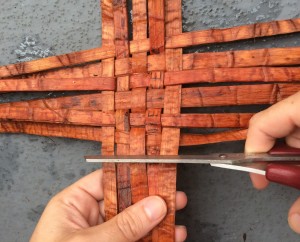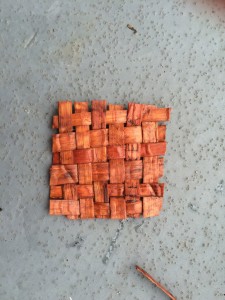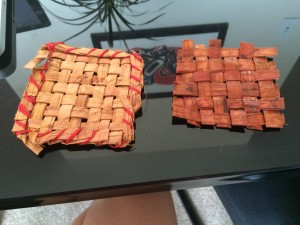Place-Based Knowing & Working with the Urban Aboriginal Community -By Fiona LaPorte
When brainstorming ideas with my group around activities for this topic I immediately thought of weaving cedar with words, pictures or phrases that spark conversation around Indigenous epistemology. To prepare for this activity, pre-select ideas that are central to the teaching you are engaging with and write them on strips of cedar (ie: wholism, interconnection, balance, Elders ect). Have the participants write words, phrases or pictures from their own worldview or experience that resonates with the pre-marked strips and overarching themes of the teaching. Have the students weave the strips together, thinking about placement and connections. Tell Indigenous stories at this time or let it be a time of quiet reflection. The objective of this type of activity is, not only to have an experiential learning opportunity that can be brought into an urban environment, but to intertwine Aboriginal and non-Aboriginal ways of knowing.
Cedar, a sacred plant to most Indigenous communities in B.C It is a tangible and concrete connection to this land, while also having deep spiritual implications. The written word represents the blending of western tools to relay Aboriginal concepts and pedagogies using an Indigenous medium. The weaving is also a visual representation of the interconnectedness of all living things. A common Indigenous practice is honoring the land and practices of the people of the land one is working, living, learning and playing on before proceeding with any other business or learning. Instilling a sense of importance in cedar as a life source for the original peoples of this land is important for our B.C. learners. It is imperative local knowledge’s are valued and included in our teaching practices whenever possible.
Weaving cedar can be grounding and calming task. It engages the mind to think about concepts and knowledge’s in a very tangible way. It can be modified to suite all ability levels and can be adapted for complexity of discussion for various groups. It is a great way to honor Indigenous ways of knowing.
This resource can be challenging if you do not have access to cedar or someone to teach you harvesting, preparation and weaving techniques, or the ‘resources’ to reciprocate. It is imperative you make connections with your local Indigenous community or, if in a school, your Aboriginal enhancement worker or Aboriginal success teacher.
I plan on doing a similar activity with my kindergarten and grade one class on a larger scale once enough cedar has been harvested. We will work together painting words and pictures on cedar strips that reflect the communities’ ideas of what the Aboriginal Focus School’s goals and learning should reflect. These ideas were gathered prior to the opening of the school and are displayed on the classroom walls in a graphic organizer. It may be worth having a second meeting with the current parents to make sure their ideas are not excluded. Images will honor the Musqueam, Tsleil-Waututh and Squamish Nations as well as reflect First Nations, Metis and Inuit values from across Turtle Island. These ideas will be weaved together to make a cover for the sand table in my classroom.
By Fiona LaPorte
